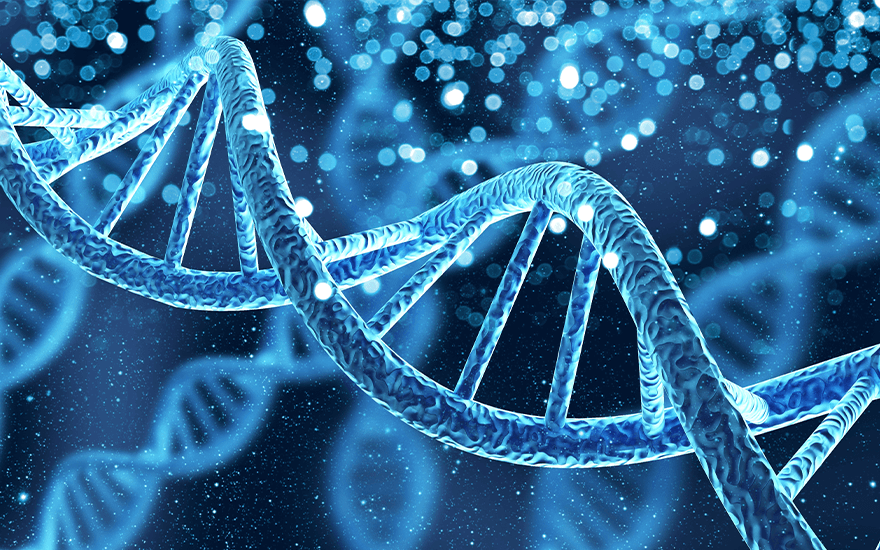The world’s oldest recorded person, Jean Louise Calment, died at 122 in 1997.
It’s been 25 since her passing, yet no one has exceeded her staggeringly long lifespan. This has led to a theory held by many – human longevity may have reached a biological limit.
Contrary to that belief, Dr. David McCarthy, an assistant professor at the University of Georgia, says it’s possible men could live to as old as 141, eclipsing scientists’ views that the oldest people can live is just over 120.
“If you read the popular press, you will have seen that people are worried that life expectancy in the U.S., and in some other countries, such as the U.K., has stopped increasing,” McCarthy said. “But there are significant generational differences that these reports often obscure.
“In the U.S., for instance, mortality probabilities have indeed risen for people of middle age. But in recent decades, mortality rates of older people in the U.S. have actually been improving faster than they have at any time since the decade following the introduction of Medicare.”
McCarthy’s paper “Mortality postponement and compression at older ages in human cohorts” used a novel approach to investigate this question and was published in PLOS ONE this week.
The study analyzed the lifespans of people born as far back as 1880 to determine what may be possible, with McCarthy’s projections showing men born in 1970 could reach the remarkable age of 141.
With rare exceptions, life expectancy has been on the rise in the US: it was 47 years in 1900, 68 years in 1950, and by 2019 it had risen to nearly 79 years. But it fell to 77 in 2020 and dropped to just over 76 in 2021. That’s the most significant decrease over two years since the 1920s.
This unprecedented decrease had well-known factors behind it, the most notable one being the Covid-19 pandemic. Other reasons included heart and liver disease and suicides. In the 1920s, the Spanish flu pandemic was the key contributor to the decline, with more than 550,000 deaths in the U.S. alone.
It’s a question that has been debated and theorized since the early years of civilization. The Biblical book of Genesis (6:3) explicitly states that humankind’s days “shall be one hundred years and twenty.” Psalms 90:10 says we can live to age 70, 80 years at the most. Ancient Roman thinkers estimated we could live 100 or maybe 110 years.
McCarthy’s new theory extends the potential of human longevity even further.
So, can men really live until 141?
Related content: The quest for eternal life: how biohacking is changing the health landscape
Theories on human lifespan
Before McCarthy, there were many others. Theories surrounding the maximum potential of the human lifespan have intrigued researchers and scientists for millennia. There is a wide range of theories – some of them outlandish – which have been accepted within the scientific community.
The Hayflick Limit Theory, coined by Dr. Leonard Haylick in a small laboratory in Philadelphia, Pennsylvania, in 1965, centers around cell growth and reproduction. Hayflick proposed that human cells can divide a limited number of times before they stop functioning.
The limit is estimated to be around 50-70 divisions, potentially limiting the maximum human lifespan to around 120 years. Hayflick’s findings were strongly challenged at the time and continue to be questioned in a few circles. Still, his achievements have enabled others to make considerable progress toward understanding and manipulating the molecular mechanisms of aging.
The Telomere Theory is one that suggests the aging process is at least partly linked to our telomeres. These are little protective caps at the ends of the DNA molecules that make up our chromosomes. Their job is to stop the ends of chromosomes from fraying or sticking to each other, much like the plastic tips on the ends of shoelaces.

It’s thought that, as a cell divides, the telomeres become shorter each time until they are gone. At this point, the so-called “real” DNA cannot be copied anymore, and the cell simply ages and can no longer replicate. The theory suggests that the maximum lifespan of humans could be around 115 to 125 years.
Some researchers believe that telomeres are the supposed secret to longevity, however, one scientific review concludes that “it is still far from clear whether a change in [telomere length] is a cause or effect of aging.”
First proposed by Peter Medawar in 1952, the Mutation Accumulation Theory proposes the random accumulation of mutations that negatively affect older organisms, leading to increased frailty and mortality.
Medawar’s theory is widely accepted as the oldest evolutionary theory, and suggests that the maximum human lifespan could be around 110 to 120 years.
Finally, The Disposable Soma Theory, formulated by Thomas Kirkwood, hypothesizes that the body has limited resources to allocate to both maintaining itself and reproducing. As we age, the body prioritizes maintenance over reproduction, with the theory suggesting that the maximum human lifespan could be around 90 to 100 years.
There are many more theories on the subject of human lifespan, all of which have their critics and doubters. However, the maximum human lifespan may also be influenced by various other factors.
Men vs. Women: A changing lifespan landscape
As of 2019, males made up 49 percent of the population, but over the age of 65, the population is 57 percent female – and starting at that age, survival differences by sex become more marked. There were only about half as many males as females among people over 80, with 81% of American centenarians being women.
According to the United Nations, women outlive men in all but a few of the over 200 nations and territories it monitors. It’s clear, then that human biology appears to favor female survival.
However, a study conducted in 2022 called into question the long-held belief that women outlive men. The analysis, published in the BMJ Open Journal, spanned two centuries across all continents and concluded that although men have a lower life expectancy than the opposite sex, they have a “substantial chance of outliving females.”
It added:
“Although male life expectancy is generally lower than female life expectancy, and male death rates are usually higher at all ages, males have a substantial chance of outliving females. These findings challenge the general impression that men do not live as long as women, revealing a more nuanced inequality in life spans between females and males.”
Women still live longer than men, but the gap is shrinking. While life expectancy for both sexes is increasing, it is growing more rapidly for men, thus, they are closing this particular gender gap.
The shift is largely due to changes in medical technology and public health. For example, better treatment and prevention for heart disease—which disproportionately kills men—is extending the lives of males.

Women not only benefit less from these improvements, but because they are now almost as likely to have smoked as men, their rates of lung disease are almost as high.
In addition, women are far more likely to develop and die from Alzheimer’s Disease than men. For example, the Alzheimer’s Association reports that a 75-year-old woman is twice as likely to have dementia as a man of the same age.
A 200-year growing rise
Over the last 200 years, life expectancy in the US has doubled. This longevity is due to better health care and hygiene, healthier lifestyles, diet, and improved medical care. We have access to antibiotics and vaccines, clean water, and plentiful and more nutritious food, and we know that exercise and smart lifestyle choices improve our quantity and quality of life.
Healthcare and medicine have both played a pivotal role in the rise of life expectancy. One of the most important is the development of vaccines. Before the development of vaccines, diseases such as smallpox and polio killed millions of people each year. Vaccines have eradicated these diseases in many parts of the world, drastically reducing mortality rates.
Another major advancement is antibiotics, which have been used since the 1940s to treat bacterial infections. Antibiotics are responsible for an average lifespan increase of about five to ten years worldwide.
Finally, advances in medical technology are a key factor. New technologies like CT scans help doctors diagnose illnesses before symptoms appear; this allows them to treat them early on and prevent complications from occurring later on down the road. In addition, telemedicine is becoming increasingly popular, allowing people easier access to the medical treatment and insights they need.
Improvements in living conditions, including upgrades to sewer systems and plumbing standards, have limited humans’ contact with harmful bacteria. In the past, people were more likely to get sick from contaminated food or water because they didn’t have access to refrigeration or sanitary food storage. Now, for the majority of people, that is no longer the case.
An improved understanding and focus on living a healthy and more active lifestyle has seen mortality decrease by 30% to 35% in physically active people compared to those who don’t exercise. The risk of type-2 diabetes, stroke and cancer are less common.
Human life expectancy has skyrocketed over the past 200 years and will likely continue to increase. As technology advances, we will continue unraveling more secrets of our bodies and how they work, further improving overall health and disease prevention.
Will we live until we are 141, as predicted by McCarthy?
With most of the life span theories, the science behind it is open to debate. We may reach new limits in the coming decades if he is correct.
“Our results confirm prior work suggesting that if there is a maximum limit to the human lifespan, we are not yet approaching it.”






